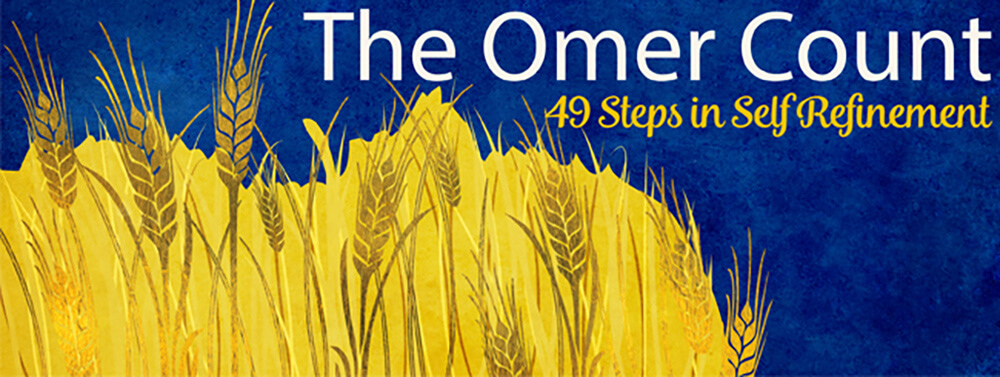Children are dreamers, living in a world of fantasy, where anything is possible. Just ask a child what he wants to be when he or she grows up and you’ll get the most fantastic and unrealistic response imaginable. “I’m going to be an astronaut fireman, so that I can save people on the moon.” They live within the infinite, the realm of endless possibility. However, as children grow up they begin to experience the struggle of reality, where their notions of the infinite becomes challenged. Imagine a child lying on a grassy field, gazing into the nighttime sky. As he stares up into the stars, he thinks to himself, “Look at how enormous the universe is. The sky just expands endlessly… It must go on forever.” After sitting with that thought for a few moments, he becomes uncomfortable. “How can anything go on forever? Everything must stop eventually.” But after a few moments of accepting this comfortable realization, he is again bothered by his thoughts. “But how can the universe stop? What else could there be? It has to go on forever…” And so, this inner conversation continues, as the child grapples with the inner struggle of contemplating the infinite within one’s own finite mind.
This child’s struggle is not a childish one; it is a challenge that confronts any finite being who tries to connect to the infinite. We are all faced with the question: How do we, as physical beings, transcend these finite dimensions? How do we relate to the abstract, to the infinite, to the spiritual? Let us approach this question through the lens of sefiras ha’omer, the counting of the omer.
Sefiras Ha’omer: Questions
We are commanded to count the days between Pesach and Shavuos, a period known as sefiras ha’omer. At first glance, this can be understood on a very simple level: As we head towards Matan Torah, eagerly anticipating the acceptance of the Torah, we excitedly count down each day towards our expected destination. This can be compared to a countdown towards one’s wedding, or a vacation, or some other exciting event. However, there is a feature of the sefiras ha’omer count that is markedly different: Rather than counting down towards our destination, we count up from our starting point! We don’t mark how many days we have left until Shavuos, we count how many days have elapsed since Pesach. What is the meaning behind this strange count?
Furthermore, what does counting accomplish? Why does our counting result in Matan Torah? Why is it so catastrophic if you miss a single day of counting?
The Answer
In truth, we are not counting towards Matan Torah, we are building towards it, one day at a time. We do not wait for Shavuos to come, we bring it ourselves, through the time and work we invest as we count the omer. If Shevuos and Matan Torah was a skyscraper, then each day of the omer would be a brick. Every day is another brick we place in our building, another day where we get to work on ourselves. The reason we can’t miss a single day of the omer is because every single day, every single brick, is essential. Matan Torah won’t come after the 49 days, it will come because of them, built by them. This is why we count up; we’re not counting down to Matan Torah, we’re building towards it, one day at a time.
Time-Bound Mitzvah?
This understanding of sefiras ha’omer sheds light on the Ramban’s enigmatic approach to the counting of the omer. He maintains that women are are obligated to count the omer because it is not a mitzvas aseh she’hazman gramah- a time-bound mitzvah. How are we to understand this? Sefiras ha’omer, a counting of each specific day between Pesach and Shavuos, seems like the epitome of a time-bound mitzvah!
However, a deeper understanding of sefiras ha’omer allows us to understand the Ramban’s opinion. In general, a time-bound mitzvah is an opportunity to tap into a certain power of time that exists at that moment. On Pesach, when we eat matzah, we tap into the power of freedom, a pre-existing reality. This same principle applies to all time bound mitzvos as well. During sefiras ha’omer, however, we are not tapping into a pre-existing time, we are creating time. When we count the omer, we do not tap into the reality of the omer, we create it. Time isn’t creating the omer, we are. This is why Shavuos is not assigned a date. It’s not tied down to a specific day, rather it is the fiftieth day that stems from the forty-nine days we have counted, ot simply because it is the sixth day of Sivan. We bring it into existence. This is why Shavuos literally means “weeks”–which also shares the same root as shevah- seven, because it is the seven weeks that we count which creates this chag.
Why Don’t We Count the First Day of the Omer?
After developing an understanding of sefiras ha’omer in general, let us focus on a few specifics of the count itself. Why don’t we count the very first day of the omer, which occurs on the first day of Pesach? In the same sense, why we don’t count the 50th day of the omer? The Torah says explicitly, “Tisperu chamishim yom” (Vayikra 23:16)–you shall count fifty days. Why then do we count forty-nine? Furthermore, the period of sefiras ha’omer that we build today parallels the forty-nine day process that the Jewish People went through upon leaving Egypt. What is the root of this process, and why is it specifically forty-nine days long?
The Arizal, Ramchal, Vilna Gaon, and many other Jewish thinkers explain as follows. Every process contains three stages. The first stage is the high, the inspiration, an experience of perfection and clarity. However, this first stage is fleeting and is followed immediately by a dramatic fall- a complete loss of everything experienced in the first stage. The second stage is a process of rebuilding what was first experienced, working and building towards perfection. There is then a third stage- a return to the original perfection of the first stage. However, this third stage is fundamentally different than the first. It is the same perfection, the same clarity, but this time it’s a perfection and clarity that you have earned. The first time it was given to you, now you have worked to build it for yourself.
The first night of Pesach was the gift, an experience of infinite transcendence. This night was characterized by makkas bechoros, a plague which Hashem Himself performed, Yetzias Mitzrayim, and the mitzvos of korban Pesach and bris millah, mitzvos which connected the Jewish people to a higher dimension of existence. However, what followed was a complete fall from this exalted level of transcendence. The Jewish People faced 49 days in the dessert, a place of spiritual emptiness. It was during these 49 days of counting, of building, that the Jewish people were able to rebuild and earn that initial transcendent gift. What resulted from those 49 days of building was Shavuos, Matan Torah, an experience of transcendence, of infinity, of the World to Come.
This is why the korban omer is a sacrifice of barley, a food described by the Sages as animal fodder. The Shavuos sacrifice is shnei ha’lechem, a sacrifice of bread, a food characterized by the Sages as human food. Before the counting of the omer, we were on a low spiritual level, the level of animals. After spending the 49 days of the omer counting and building ourselves, we rise to the transcendent spiritual level of tzelem Elokim, worthy of experiencing Matan Torah. Perhaps this is why there were two loaves of bread, one representing the original gift on the first night of Pesach and the second representing that which we earned after 49 days of building.
We don’t count the first night of Pesach because this night is a gift, something unreal, unearned. Counting represents building and the building process only begins on the second day of Pesach, once the gift has been lost.
Why 49 days?
Let us now turn to our next question. Why is the counting of the omer specifically 49 days long? The days of the omer set us up for Shavuos, for Matan Torah. What is the significance of this number? In order to understand the number 49, we must recall a principle we have developed previously. The Maharal explains that seven is the number of the natural. All physical and natural components of this world are comprised of sevens: There are seven days in the week, seven notes in the musical scale, seven colors in the spectrum of light, etc. If seven is the number of the physical, eight is that which goes beyond seven, that which transcends the physical.
This is why bris milah is performed on the eighth day- we transform the most physical and potentially animalistic organ into a vehicle of holiness and transcendence. This same theme of eight is why the miracle of Chanukah lasted eight days, and it is why the miracle came through shemen (oil) a word with the same root and concept as shemonah, eight. This is also why sefiras ha’omer is a seven week process of seven days each. We build level by level towards transcendence, towards the infinite, towards the eighth week- Matan Torah. However, why is it that seven and eight represent these concepts? To understand this, we need to first explore two different levels of order.
Two Levels of Order
Another interesting feature of the Omer is the emphasis on counting each day. This suggests that sefiras ha’omer is one long mitzvah, complete only if each of the 49 days are counted. However, l’halacha we make a bracha on each separate day of the omer, suggesting that each one is a mitzvah in its own right. How do we reconcile this apparent inconsistency?
Rav Dessler describes two different types of order: The first is a practical one, where the order facilitates access and usability. For example, a library is organized according to a system that allows one to access each piece of information efficiently. Without an ordered system, it would be hard to benefit from a huge collection of books. The order therefore provides access and usability.
There is a second level of order, one in which the pieces of a structure come together in a specific way so that the whole transcends the sum of its parts. For example, a radio is composed of a bunch of pieces, none of which is too valuable on its own. However, when these pieces are put together in just the right way, something emanates from the pieces- a radio signal.
This level of order is fundamentally different from the first form of order. Regardless of their organization, each book in a library maintains its individual worth, nothing greater results from their order. However, in a system of the third order, it is only when the pieces come together that something truly valuable results.
Six, Seven, and Eight
We live in a three dimensional world. However, this really refers to the six directions of space: right-left, up-down, forward-backward, the six sides of a three dimensional cube. Interestingly, the six sides don’t automatically result in a three dimensional cube, the six sides can be lying face down on the floor, comprising nothing. The “seventh” refers to that which connects all the pieces together into a single unit. This is the unifying factor that creates a physical form and vessel out of the six disparate parts. The “eighth” refers to that which transcends the sum of the pieces, the transcendent aspect that emanates from the level of seven. “Six” represents the physical pieces, such as the days of the week. “Seven” represents that which connects the physical pieces together, connecting the physical to spiritual, such as shabbos. “Eight” represents that which transcends the physical, such as bris milah and Chanukah.
49: Ultimate Expression of Seven
This is why we count 49 days. During sefiras ha’omer, we build from the finite to the infinite, from the physical to the spiritual. This is the journey from six to seven to eight. 49 is the ultimate expression of seven, since every single digit within “seven” is also made up of seven (the numbers one to seven are each made up of seven parts), and 7×7=49. We’re not only trying to reveal the concept of seven, but also the seven within the seven. Of course, even the seven within the seven is made up of seven, ad infinitum, but once you’ve established the principle, you don’t need to go further.
Why Don’t We Count the 50th?
We can now explain why we don’t count the 50th day of the omer. While six represents the pieces, and seven represents that which connects the pieces together, the eighth represents that which transcends the pieces, that which emanates from the pieces. The “eighth” of 49 is the 50th. We can’t count the 50th since we can’t build it; the 50th is the result of everything we’ve built and constructed during our 49 days of counting. The 50th day, Shavuos, is the result of all the pieces coming together, of all of Klal Yisrael bonding into a oneness. The result is Matan Torah, a transcendent experience of connection with Hashem, the infinite, the World to Come.
This also sheds light onto why we don’t count the first day of Pesach either. The first day is the gift, unearned and unreal. The next 49 days are the days of building, creating, and earning it ourselves. The 50th day is the same as the first day, transcendent, uncountable, but this time, we’ve earned it, it’s real, it’s ours. In truth, even the 50th has a dimension of “gift” to it, but it is only given once we’ve created the vessel to receive it, after 49 days of building. As the Ramchal explains at the end of Mesilas Yesharim, “techilaso avodah vi’sofo gimul”- the beginning is hard work and the end is a gift. Although we have worked towards the fiftieth day for forty-nine days, the transcendence we experience on that day transcends anything we could have expected.
This is why we only count 49 days and this is why it’s called Shavuos-weeks, the same root as shevah- seven. We are building seven weeks, and the transcendent 50th, Matan Torah, is what manifests from that which we create. This is why the Maharal also refers to Torah as the “eighth”, as it is Hashem’s transcendent wisdom and will which He bestowed upon us on the 50th day.
This also explains the dichotomy between each day of the omer containing its own significance and the fact that it is one long mitzvah, whereby if you miss a single day you can no longer count with a bracha. Each piece contains Omni-significance, but only in as much as each day is built correctly, building off of the previous structure and preparing for what is yet to come. Only when each and every one of the 49 pieces are built correctly can the 50th emanate from the pieces, can Matan Torah occur.
Why We Count From the Omer
This unique approach also explains another strange feature of sefiras ha’omer. If the purpose of counting the omer is to count down to Shavuos, why do we count from the omer? The omer was brought on the first day of Pesach, while the korban shtei ha’lechem was brought on Shavuos. Why do we count from our point of departure, rather than towards our destination?
The answer is that we are counting towards the infinite, towards the transcendent. When building up, you start by building a foundation and then begin your climb upwards. The same is true for sefiras ha’omer. We are counting towards infinity, towards the 50th. While it’s true that we keep this in mind, the mechanics of actually building towards the 50th require us to build upon our foundation, starting with the first day of the omer, and building our way up from there.
Shmita and Yovel
In last week’s parsha, parshas Behar, we are introduced to another set of six and seven- the six years of working the land and the seventh year of shmita. We are also introduced to another pair of 49 and 50, the 49 regular years and then the year of Yovel. What is the meaning of this?
Levels of Shabbos
As we’ve explained before, the weekday represents the time of building and creating, while Shabbos represents the cessation of creative activity, whereby we experience everything we’ve become, everything we’ve built. Shabbos is the seventh that connects the six days of the week together and connects us to the eighth. This is why the gemara in Brachos 57b compares shabbos to a taste of Olam Habah- the World to Come; it is a taste of the eighth, the infinite.
The next level of this principle is sefiras ha’omer; instead of seven days we build seven weeks, we build towards the 50th day, which is also the eighth week.
The subsequent level is Yom Kippur, which is referred to as Shabbat Shabbatot. Just as the journey to Matan Torah has 50 days, the lunar calendar has about 50 weeks, as 50×7=350 and there are 355 days in a full lunar year. The solar year has 365 days in the year. The Vilna Gaon explains in his commentary to Sefer Ditzniyusa that the Aseres Yimei Teshuva- the Ten Days of Repentance- serve to connect the lunar year to the solar year. Just like Matan Torah is the 50th day of the omer, Yom Kippur is an extension of the 50th week of the year, Rosh Hashana. It is therefore no surprise that the second time we experienced Matan Torah was on Yom Kippur.
The final level is Yovel, the 50th year. After 49 years of building and creating, the 50th year is a year of existential transcendence. This is why the year of Yovel is compared to a full year of Yom Kippur. The pesukim state that Yovel begins on Yom Kippur (Vayikra 25:9-10). Yovel is that which results from the building of 49 years correctly, it is a full year of Matan Torah.
Connecting to the Infinite
Just like the little boy in the introduction, we all struggle to connect with the infinite, to see the spiritual within the physical, to find genuine meaning and purpose in an often turbulent and chaotic world. It can feel overbearing to build a skyscraper, the task is quite daunting. However, the key is to have the general goal in the back of our minds while we focus each day, each moment on placing this brick perfectly. Each day of the omer is a new brick- a new part of our journey towards Matan Torah, towards the infinite, towards marrying Hashem. May we be inspired to create something magical as we build towards Matan Torah, one-day-at-a-time.





